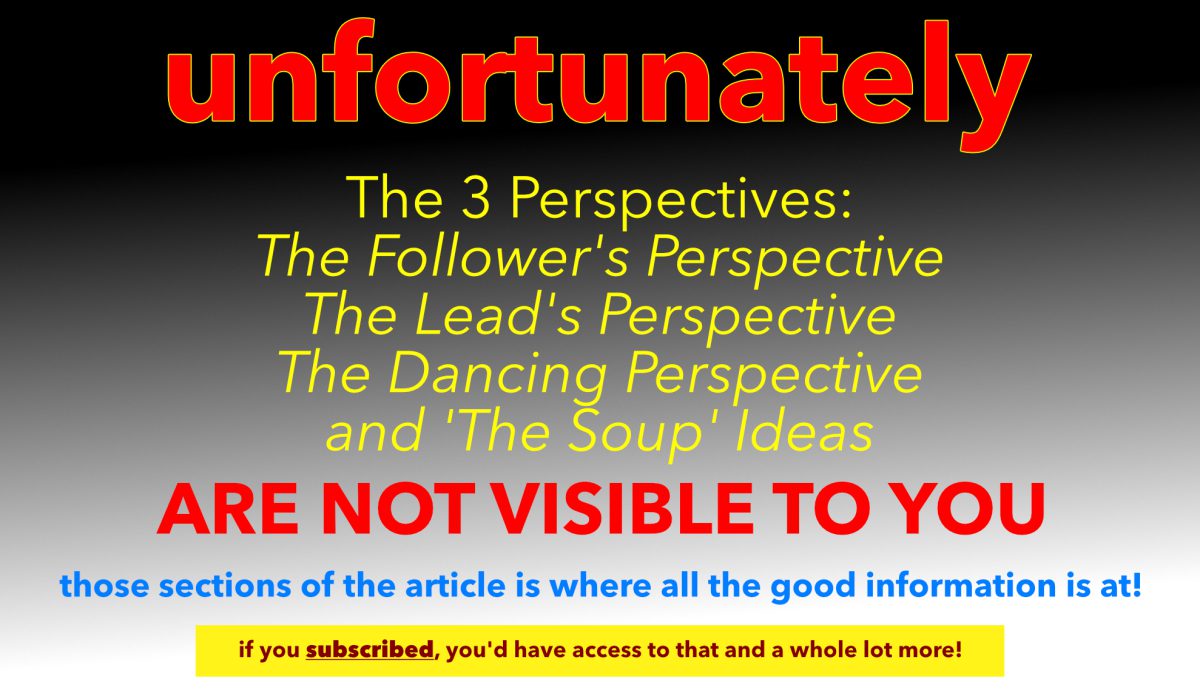Frequently when we are out social dancing, because tango is no longer a walking dance but rather a turning dance, is to turn to the Open side of the embrace. Meaning we turn to the Left (for the Lead), and Right (for the Follower). And the reason we turn to the Left is because it’s far easier. Or so that’s the perception. And when we turn to the Right, again our perception is, that it’s difficult. That perception is a reality because IT IS difficult for a few reasons. One of the more common reasons why it’s difficult is because the Follower gets caught in the Lead’s armpit resulting in Arm Pit Dancing. And the reason why that happens is usually because both roles, do not make the necessary adjustment to allow for the turn to the right to happen at all. That’s not what this video is about. This video is about another solution to that problem that does not require adjustment from either role!
What is a Closed Side Turn ? The simplest way that I can put this is that the Closed Side Turn is a Molinete/Giro structure that turns to the right (for the Lead), and the left (for the Follower) with a very simple modification. Usually this idea is shown as an error, and sometimes as an inadvertent error that happens, and sometimes as an unconscious one. In this video I show you that not only is this NOT an error but it is a highly desirable idea that opens up options and opportunities for both roles, not just the Lead. However, let me be clear about something, while I don’t show the options available those options are available in other videos on this site > The Argentine Enganche or ‘Wrap’, The Social Sacada, The Social Single Axis Turn, The Social Step-Over Colgada, etc.
From a Follower’s Perspective. For you this is a Follower’s Molinete to your Lead’s Giro. But that Girl is slightly different which we’ll get into in a bit from the Lead’s side of things. For you > It’s Back-Side- Forward. Don’t get confused, don’t get lost, don’t mishear me, or misunderstand me, there is nothing different about what you’re doing that you have to do that you haven’t done before. But there are some things that we do have to talk about, to remind you about that are kind of important:


